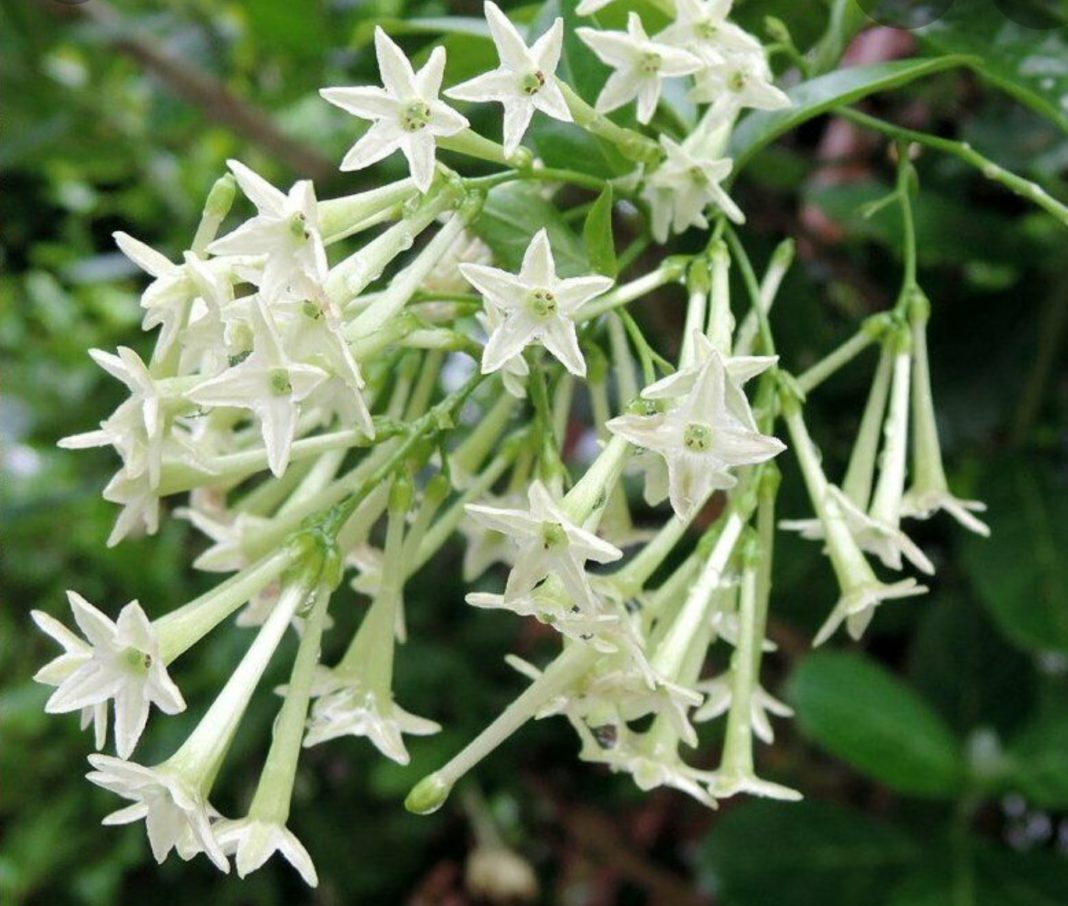Cestrum nocturnum is also known as the night-blooming jasmine, Lady of the Night, Queen of the Night, Dama de Noche and Galan de Noche.
Aptly named because its white-yellow, tubular flowers bloom at night, as the flowers close during the day.
Belonging to the Solanaceae family, it is also known as the nightshade family of plants, best known for its scent.
It is one of the, or the strongest scented plant in the world, emitting its wonderful scent on summer nights.
In bloom, the flowers release a scent of sweet perfume that pervades the area. A sub-tropical plant first discovered growing in the West Indies, said to have been brought to Europe by Christopher Columbus in the 15th century.
Grown as a houseplant you may never need to use air fresheners again. Certainly, you won’t need them when the plant is in flower.
Grown outdoors they can reach 3 metres in height and spread 2 metres, in ideal growing conditions. Maintenance, prune back into shape, once flowered, flowering up to four times annually after which they produce white berries full of seeds.
The Cestrum nocturnum is self-pollinating and the most common pollinators include bats and moths.
The plants all flower at the same time, so if yours is in flower, you can guarantee that every other one in the neighborhood is flowering at the same time.
It is easy to propagate, as jasmine roots will grown in a tub of water. Plant out, or plant clippings after pruning in a pot of compost, and leave in a sunny spot.
Water on a consistent basis, and you should see new growth appear within weeks. Water well in the summer, but leave them on the dry side in winter.
Replace compost annually if grown in pots, as they can sap all the nutrients out of the compost.
Cestrum nocturnum make very good insect repellants, including mosquitoes, due to their powerful scent attracting moths and bats.







I had Galan de Noches in my garden in Cabo-Roig, i am now back in the UK and guess what l have one in a pot and is just coming into flower my garden and house smells great in the evening